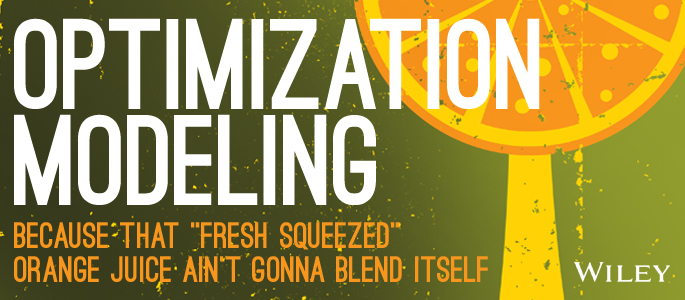Optimization Modeling: Because That Fresh Squeezed Orange Juice Ain’t Gonna Squeeze Itself
When you were a child, perhaps there came that day when someone explained to you that Santa Claus didn’t exist, outside of men with bad rosacea dressed up at the mall.
Well, today I’m going to shatter another belief: your not-from-concentrate premium orange juice was not hand squeezed. In fact, the pulp in it is probably from different oranges than the juice, and the juice has been pulled from different vats and blended according to mathematical models to ensure that each carafe you drink tastes the same as the last.
Consistent taste in OJ year round isn’t something that just anyone can pull off. Oranges aren’t in season in Florida year round. And at different times of the year, different orange varietals are ripe. Pull fruit too early and it tastes “green.” Get fruit from another country that’s in season instead, and the juice might be another color. Or sweeter. Consumers demand consistency. That might be easy with Sunny D, but how do you get that out of a bunch of vats of freshly squeezed, very chilled orange juice?
Juice can be procured from all around the world, from different oranges in different seasons. Each product has different specs—some might be a bit more tart, some a bit more astringent, and others might be sickly sweet. By blending this “portfolio” of juices, a single consistent taste can be maintained. But how? HOW DO YOU BUILD A BLENDING MODEL THAT REDUCES COST WHILE MAINTAINING QUALITY, AND WHAT TYPE OF WRENCHES MIGHT GET THROWN INTO THE WORKS THAT WOULD NEED TO GET MATHEMATICALLY FORMULATED ALONG THE WAY?
To access the answers and more, access Chapter 4 of John W. Foreman’s book, Data Smart: Using Data Science to Transform Information into Insight and accompanying excel workbook.

